Introduction
The aviation sector in the United Arab Emirates (UAE) stands at the intersection of rigorous regulatory oversight and world-class operational standards. Cabin crew certification and safety obligations represent a core focus of UAE aviation law, directly impacting airlines, crew members, HR professionals, and legal practitioners. In light of recent UAE law 2025 updates, particularly through new federal decrees and regulatory directives, compliance in the domains of crew certification and onboard safety has been strengthened, bringing new challenges and opportunities for businesses in the aviation field. Understanding these changes is paramount to ensuring lawful operations, safeguarding passengers, and managing organizational risk.
This article delivers an expert legal analysis of cabin crew certification and safety obligations within the UAE, referencing the latest regulations, decrees, and enforcement priorities. It is tailored for industry executives, legal advisors, HR managers, and any stakeholders requiring actionable clarity and authoritative guidance in this complex regulatory landscape. The advice provided herein draws upon official documentation from the UAE Ministry of Justice, General Civil Aviation Authority (GCAA), and the latest Federal Decrees published in the Federal Legal Gazette. Readers will gain not only a deep understanding of the legal framework but also practical compliance strategies, risk assessments, and forward-looking insights relevant for 2025 and beyond.
Table of Contents
- UAE Cabin Crew Regulatory Framework
- Certification Provisions and 2025 Regulatory Updates
- Safety Obligations and Responsibilities
- Comparative Analysis: Old vs New Laws
- Compliance Challenges and Best Practices
- Case Studies and Hypothetical Scenarios
- Risk Assessment and Non-Compliance Penalties
- Forward-Looking Perspectives and Recommendations
- Conclusion
UAE Cabin Crew Regulatory Framework
Legal Basis: Federal Law and GCAA Oversight
The core regulation governing cabin crew certification and safety in the UAE is Federal Law No. 20 of 1991 (Civil Aviation Law), with detailed provisions issued by the General Civil Aviation Authority (GCAA) through Civil Aviation Regulations (CARs). The GCAA’s role as the national aviation authority involves: issuing licences and certifications for cabin crew; conducting audits; enforcing compliance with safety standards; and issuing further guidance through Advisory Circulars (ACs).
Key legal texts include:
- Federal Law No. 20 of 1991 (Civil Aviation Law)
- Civil Aviation Regulation (CAR) Part II and IV (Cabin Crew Licensing & Air Operator Certification)
- Ministerial Decision No. 3 of 2024 regulating Crew Member Training Standards
- 2025 Federal Decree-Law No. 4 regarding Aviation Safety and Compliance Controls
These texts provide the backbone for operational rules and are supported by GCAA’s ongoing issuance of guidance and safety directives.
Application to Operators and Personnel
All commercial and private air operators registered in the UAE, as well as foreign airlines operating into the UAE, must ensure their cabin crew are certified and comply with all GCAA-mandated safety responsibilities. Failure to comply risks sanctions, penalties, and possible suspension of the operator’s Air Operator Certificate (AOC).
Certification Provisions and 2025 Regulatory Updates
Certification Requirements Under UAE Law
Certification of cabin crew is addressed specifically under GCAA CAR Part II, Subpart K. The following are the main legal obligations:
- Mandatory licensing for all cabin crew carrying safety functions, subject to medical fitness, language proficiency, and GCAA-approved training.
- Training organizations must possess GCAA accreditation and audit approvals.
- Initial, recurrent, and type-specific safety training is required, including emergency evacuation, first aid, and security awareness.
- Cabin crew certification is subject to periodic renewal and ongoing performance evaluations.
2025 Updates: Federal Decree-Law No. 4/2025
The newly introduced Federal Decree-Law No. 4/2025 implements significant updates:
- Tighter periodicity for mandatory refresher training (annual as opposed to biennial).
- Enhanced certification prerequisites, including psychometric assessment criteria and minimum flight hours for new recruits.
- Strengthened audit and enforcement power for the GCAA, enabling real-time suspension of individual crew member certificates in case of breach or non-conformity.
- Greater emphasis on digital records and certificate traceability to minimize document fraud.
Reference Table: Key Certification Shifts (Pre-2025 vs. 2025-Onward)
| Certification Criterion | Pre-2025 UAE Law | 2025-onward (Federal Decree-Law No. 4/2025) |
|---|---|---|
| Initial Training | 24-hour programme, mixed digital and in-person, biennial GCAA review | 40-hour programme, psychometric screening, GCAA in-situ observation |
| Recurrent Training | Once every two years | Mandatory annual refresher (every 12 months) |
| Medical Fitness Standards | Class II certificate, renewed biennially | Class II certificate, renewal every 12 months, advanced vision/safety screening |
| Flight Hour Minimum (New Hires) | No explicit minimum | Minimum 50 operational flight hours before certification |
| Certificate Traceability | Manual logbooks accepted | Mandatory digital certification records (blockchain traceability by operator) |
Consultancy Insight
Operators are urged to audit existing HR and crew management procedures to align with the heightened requirements of Decree-Law No. 4/2025. Legacy recruitment pipelines must be adapted to factor in the psychometric and operational experience prerequisites, or risk delayed onboarding and regulatory non-compliance.
Safety Obligations and Responsibilities
Obligations Imposed by Statute and Regulation
Cabin crew safety duties derive not only from the broad Civil Aviation Law but also from specific mandates issued by the GCAA and the UAE Ministry of Human Resources and Emiratisation. Required actions include:
- Strict adherence to the operator Safety Management System (SMS).
- Active participation in emergency drills, onboard briefings, and real-time safety monitoring.
- Immediate reporting of incidents and near-misses via GCAA digital platforms.
- Mandatory participation in crew resource management (CRM) sessions to ensure situational awareness.
Cabin crew are considered critical safety personnel and, as such, duty-of-care standards are rigorously enforced both on domestic and international operations involving UAE carriers.
Recent Emphasis on Digital Compliance and Safety Culture
Recent ministerial guidance, promulgated in 2024, has called for enhanced use of digital reporting systems, AI-based safety analysis, and real-time compliance dashboards. Operators must integrate these tools into operational routines and train crew members for digital fluency to meet regulatory expectation and audit readiness.
Practical Challenges
The complexities of multilingual, multicultural cabin environments in UAE-based airlines (notably Emirates, Etihad, and Flydubai) require clear standardization of safety practices across diverse crews. Practical difficulties can arise in ensuring uniformity, particularly during crisis scenarios or high-pressure moments. Legal counsel and HR should collaborate closely to provide ongoing culture-specific scenario training and language support tools.
Comparative Analysis: Old vs New Laws
Key Regulatory Improvements and Compliance Burdens
The following table summarizes the principal differences between the previous regulatory regime and the latest 2025 updates for cabin crew certification and safety obligations:
| Aspect | Pre-2025 | 2025 Update |
|---|---|---|
| Refresher Training Interval | Biennial | Annual |
| Audit Process | Pre-announced, paper-based | Surprise, digital oversight, GCAA mobile audits |
| Safety Incident Reporting | Manual forms, post-flight | Instant mobile reporting, cloud audit trail |
| Enforcement Power | After due process | Emergency GCAA intervention, certificate suspension in real-time |
| Minimum Experience for Certification | Flexible, no set minimum hours | Minimum 50 hours (validated digitally) |
| Certification Records | Paper, operator archive | GCAA-verified digital record with external audit access |
Consultancy Recommendations
All operators must transition legacy paper records to the prescribed digital format and provide ongoing digital compliance training for both new and current crew members. Legal and HR departments should adopt a proactive audit cycle internally, simulating surprise GCAA audits for readiness.
Compliance Challenges and Best Practices
Major Challenges Facing Operators
- Data Migration: Transitioning to blockchain-certified crew records may present technical integration hurdles.
- Recurrent Training Costs: Increased frequency and higher training benchmarks will necessitate larger HR and compliance budgets.
- Global Consistency: International carriers operating in the UAE will need to harmonize their training standards with GCAA mandates, which may diverge from home jurisdiction rules.
Best Practice Checklist
| Best Practice | Rationale/Compliance Gain |
|---|---|
| Annual Comprehensive Internal Audit | Identifies non-conformities before GCAA inspection |
| Staff Digital Literacy Program | Prepares for new digital and AI-based compliance reporting |
| Third-Party Training Accreditation Review | Ensures all external courses meet GCAA standards |
| Scenario-Based Crisis Training | Mimics enforcement audit conditions and builds CRM strength |
| Legal and HR Collaboration | Reduces risk of procedural gaps through integrated policy deployment |
Case Studies and Hypothetical Scenarios
Case Study 1: Large National Carrier – Compliance Under New Law
An Emirates-type airline with an existing international crew faces the challenge of transitioning its records to mandated digital certification. By establishing a cross-functional task force involving Legal, HR, IT, and Operations, the airline is able to quickly convert legacy training records, update its SMS portal, and roll out an annual in-house audit program. As a result, it passes the GCAA’s spot digital inspection without penalty.
Case Study 2: Non-Compliance and Regulatory Consequence
A hypothetical mid-sized UAE-based operator fails to update its ongoing crew training program, relying on biennial refreshers. During a surprise GCAA audit, several cabin crew are found with expired certificates and paper-based records. The GCAA immediately suspends their AOC for 48 hours pending rectification, direct financial losses ensue, and the operator receives a substantial administrative fine as per Federal Decree-Law No. 4/2025.
Practical Illustration: Compliance Process Flow
Suggested Visual: A process flow diagram showing the ideal path from crew onboarding, training, certification, digital record creation, to annual audit and GCAA reporting. Such a visual aids HR and compliance managers to map responsibilities and maintain legal compliance at each stage.
Risk Assessment and Non-Compliance Penalties
Types of Non-Compliance and Associated Liabilities
- Operating Without Valid Certification: Results in administrative fines (AED 100,000 and up), potential criminal prosecution in severe cases, and immediate crew grounding.
- Failure in Safety Incident Reporting: Attracts regulatory notice, progressive fines (cumulative per incident), and possible escalation to Ministry of Justice.
- Audit Evasion or Falsification of Records: Treated as a major violation under Federal Decree-Law No. 4/2025, leading to suspension/revocation of operator’s license, compensation claims from affected parties, and risk to insurer coverage.
Penalties Comparison Table
| Offence | Penalty (Pre-2025) | Penalty (2025-onward) |
|---|---|---|
| Operating without valid crew certificate | AED 30,000 fine; warning | AED 100,000+ fine; real-time AOC suspension |
| Late incident reporting | AED 5,000 per late report | AED 20,000 per incident; compliance monitoring for 12 months |
| Records falsification | Up to AED 100,000; license review | License revocation, penalty up to AED 500,000, criminal referral |
Consultancy Strategy
Constant legal monitoring and periodic risk assessment must be institutionalized. Appointing a Compliance Officer specifically tasked with monitoring staff certification cycles, digital recordkeeping, and incident reporting is now recommended as industry best practice.
Forward-Looking Perspectives and Recommendations
Technological Evolution and Regulatory Trend
Looking forward, the UAE aviation sector will likely experience greater integration of AI-driven compliance checks, real-time digital audits, and possibly biometric crew identification, as hinted by GCAA’s 2024 AI-Compliance pilot program. Operators should invest in scalable technology and ensure their legal counsel stay abreast of ongoing regulatory bulletins via the UAE Government Portal and GCAA e-bulletins.
Best Practice Summary
- Continuously monitor GCAA bulletins and regulatory updates.
- Implement adaptive compliance technology tailored to the UAE’s evolving legal environment.
- Engage specialized legal advisors to audit and future-proof crew certification and safety processes.
- Maintain robust digital training and compliance documentation for all crew members.
Anticipating and planning for legislative change remains critical for sustainable, risk-managed operations.
Conclusion
The evolution of cabin crew certification and safety obligations under UAE law, especially following the 2025 decree and GCAA enforcement directives, has fundamentally reshaped the obligations and risks for UAE-based and foreign carriers alike. While the compliance burden has increased—reflecting international benchmarks for safety and professionalism—these standards serve as a strategic safeguard, supporting the UAE’s reputation as a global aviation leader. It is essential that legal, HR, and operational teams collaborate proactively, adopting digital best practices and embedding safety culture at every operational level. Only such a holistic approach will ensure enduring legal compliance and operational excellence as the UAE forges ahead in aviation leadership through 2025 and beyond.



